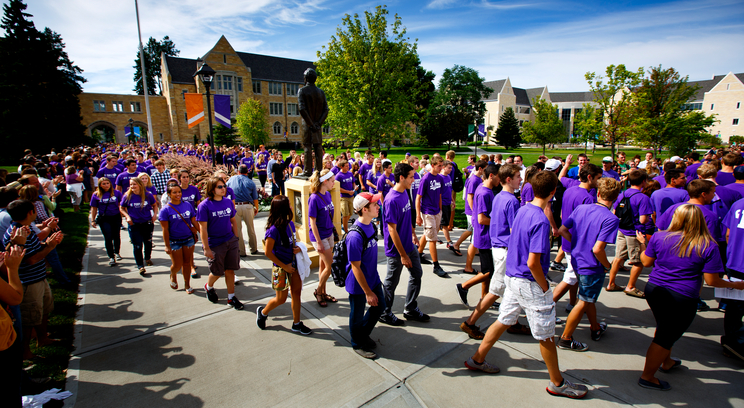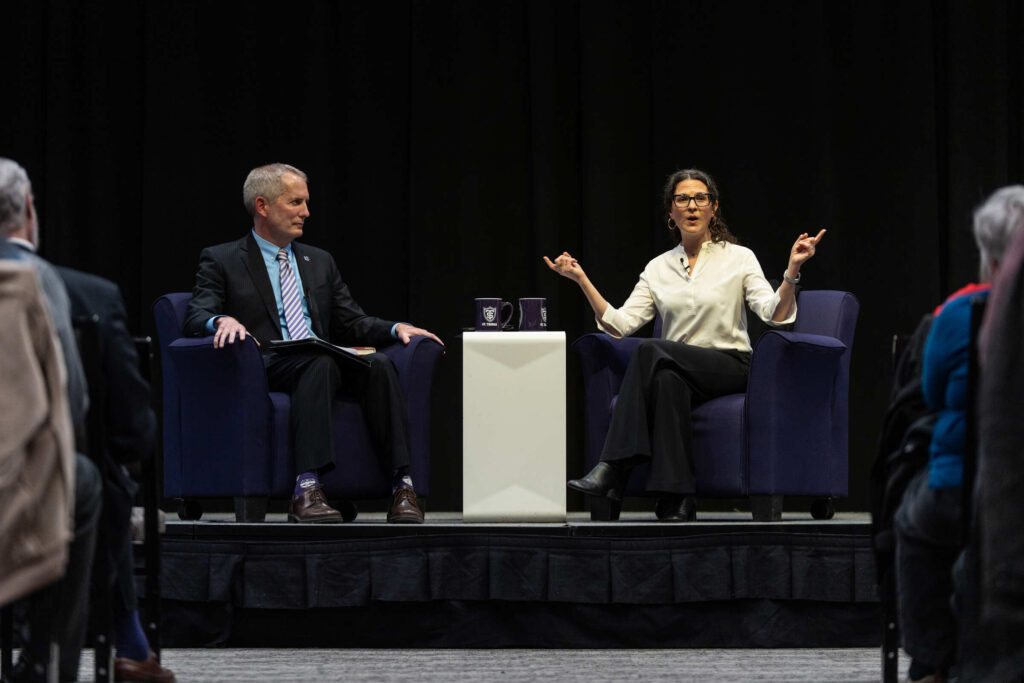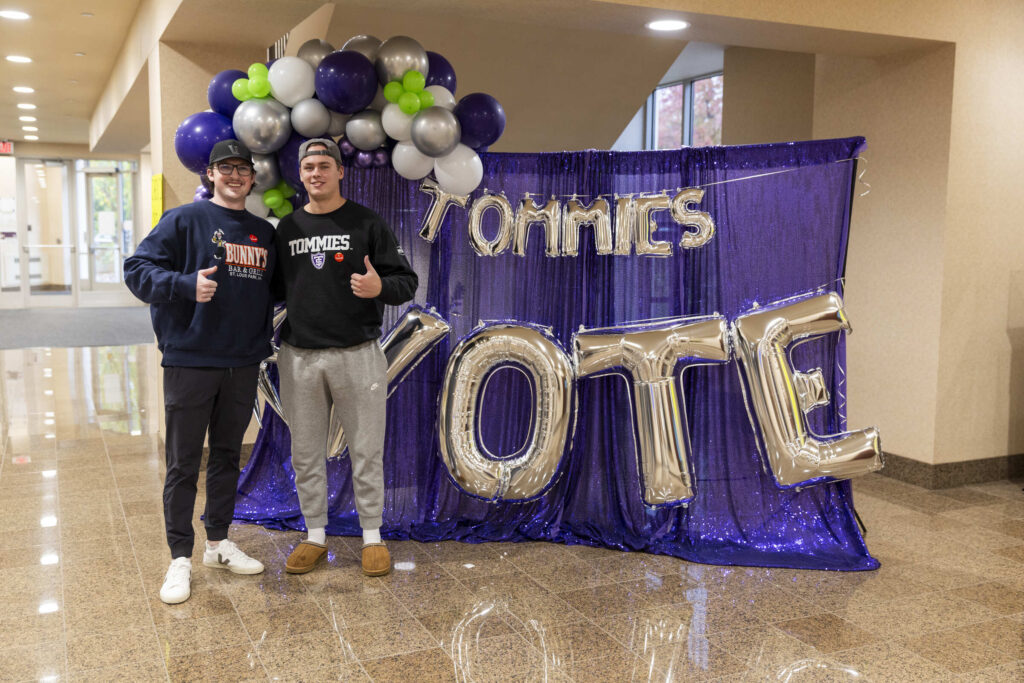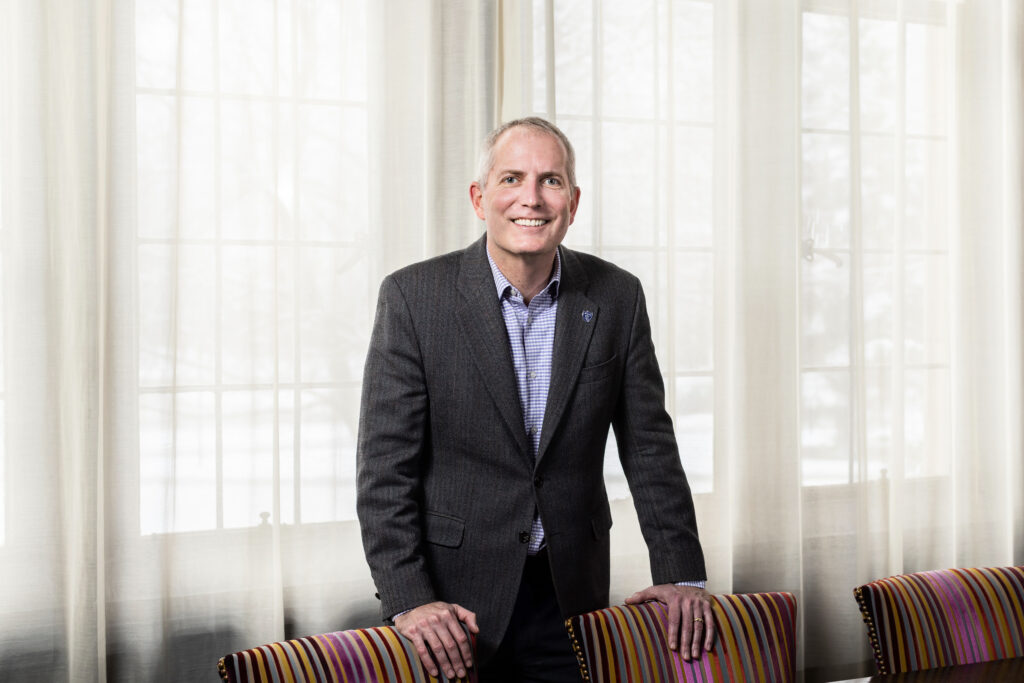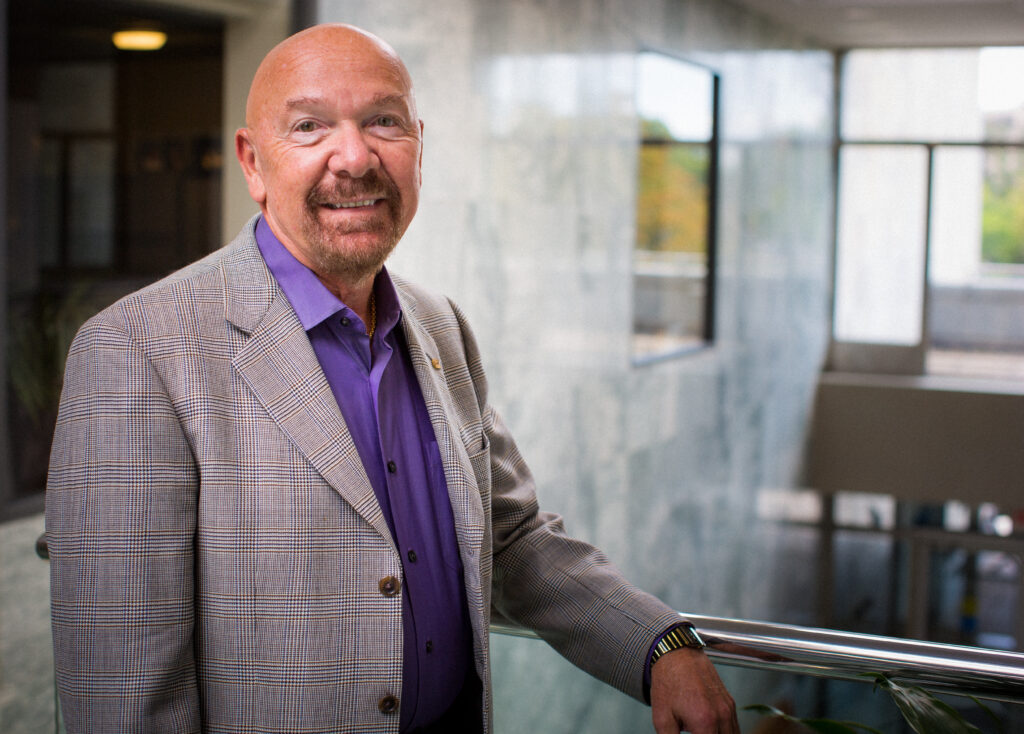St. Thomas by the numbers
Enrollment at the University of St. Thomas this fall stands at 10,221, a decline of 95 students or just under 1 percent. Following a trend in recent years, slight gains at the undergraduate level were offset by decreases at the graduate level … in terms of students as well as the number of courses they are taking.
A large freshman class of 1,368 contributed to a record undergraduate enrollment of 6,350, an increase of 14 students or 0.2 percent over last year. At the graduate level, enrollment of 3,871 is down 109 students or 2.7 percent. Two of the university’s seven schools had graduate-level increases and five had decreases.
According to statistics compiled by the St. Thomas Office of Institutional Effectiveness, the combined total of undergraduate and graduate credit hours, which represent the number of courses that students are taking, is 122,896.5 this year, a drop of less than half of a percent.
Undergraduates at St. Thomas comprise 62 percent of all students but account for 77 percent of credit hours. Over the past five years the number of credit hours has increased 5 percent at the undergraduate level and decreased 13.7 percent at the graduate level, resulting in a small overall increase of 0.1 percent.
Over that same period, enrollment increased 3.3 percent at the undergraduate level and decreased 17.7 percent at the graduate level, resulting in an overall decrease of 5.8 percent. The university’s enrollment has been more than 10,000 for the past 22 years, with a peak of 11,570 in 2001.
At a time when some colleges and universities are enrolling more women than men, the St. Thomas male-female ratio continues to show a near-even split. The percentage, 51.4 for men and 48.6 for women, has not changed much over the past decade. For new freshmen, it’s 52.4 percent men and 47.6 percent women.
The percentage of students who are persons of color this fall stands at 14.8 percent, up half a percent from last year. The percentage of students of color is:
- 12.3 for freshmen, down from last year’s 14.4
- 13.9 for undergraduates, down from last year’s 14
- 16.4 for graduate students, up from last year’s 14.8.
These percentages would be higher if international students were included. St. Thomas does not use the race of students from other countries when calculating the overall percentage of its students of color. This fall St. Thomas welcomed 436 students (193 undergrads and 243 graduate students) from 59 countries, which overall is up 35 from last year and the highest since 2003.
Here are the enrollment numbers for students of color:
- 400 Asian (226 undergrad and 174 graduate)
- 359 Black or African American (163 undergrad and 196 graduate)
- 354 Hispanic (256 undergrad and 98 graduate)
- 275 who list two or more races (187 undergrad and 88 graduate)
- 16 American Indian (10 undergrad and 6 graduate)
- 6 Hawaiian or other Pacific islander (all graduate).
In addition to welcoming six National Merit scholars and 28 high school valedictorians, here are some additional characteristics of the freshman class:
- 1,349 are from United States and 19 are international students. By number of international students, the top three countries are China, Saudi Arabia and Norway
- They come from 25 states (29 last year and 24 in 2011)
- Their average class rank was in the 73rd percentile (75th last year and in 2011)
- 159 had 4.0 or better grade-point averages (182 last year and 145 in 2011)
- Their average grade-point average was 3.54 (3.56 last year and in 2011)
- Their average ACT score was 25.6 (same as last year and 25.7 in 2011)
- 51 percent are Roman Catholic (53 percent last year and 48 percent in 2011).
- The most popular name for women is Megan, and for men, Michael (last year it was Rachael and Michael, and in 2011 it was Emily and Andrew).
The percentages of St. Thomas students who indicated they are Roman Catholic did not change this year. Overall, 42 percent are Catholic; at the undergraduate level it is 49 percent, and at the graduate level it is 31 percent. Overall, 76 percent of the students report some religious affiliation, which is the same as five years ago.
Enrollment remains strong at the undergraduate-level St. John Vianney Seminary and the graduate level St. Paul Seminary School of Divinity. St. John Vianney has 132 seminarians this fall, down one from last year, while the St. Paul Seminary School of Divinity has 106, up two from last year.
The number of undergraduates who transferred to St. Thomas this fall is 271, down four from last year but up 26 from 2011.
Enrollment on the university's St. Paul campus is 7,535, down 31 from last year. St. Thomas is limited to 8,750 students on its main campus under a Conditional Use Permit that was approved in 2004. The highest enrollment in St. Paul was 8,712 in 1991, the year before the university opened its Minneapolis campus.
For undergraduates, commuter students outnumber resident students 3,875 to 2,446.
Here’s the graduate-level enrollment and credit hours, and the percent change from last year, for St. Thomas’ colleges and schools:

